
In this collective show, Angélica Teuta, Gabriela Estrada Loockhartt and Sara Herrera come together in the exploration of the territory using their intuition and residing in it as a guide in their processes. The three artists approach nature from observation and listening to ask questions about how the world has been inhabited and what is the way to do so with care and respect. Implicit in this body of works are denunciations, criticisms, and observations of the interactions between human beings and nature and the consequences of these encounters and confrontations for the planet and for life itself, both in the present and in the future.
Through oneiric landscapes and mythical animals with energetic and emotional powers, these pieces invite us to reflect on the synchronicity and symbiotic relationships that nature organically proposes, as a map that should be followed to understand, learn and continue the flow of life.
Policroma is a space for interaction, encounter and collaboration, through the aesthetic and conceptual richness of its artists proposals.
Since 2018, the gallery opened its doors to diffuse, promote and commercialize contemporary art through local and international artists, both represented and in alliances with other galleries and spaces.
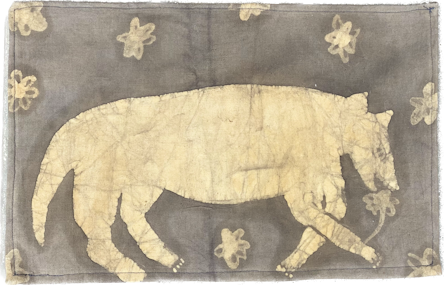
Gabriela Viridiana is a Latin American, ecofeminist woman. Inhabiting her territory is the seed of her work. She built an unusual house, a nest with breathing walls and woven roofs, where inner life is born in conversation with the mountain that holds it. In her work she seeks to approach the earth from listening, not from imposition, because nature has been exploited by patriarchy as a capital that endlessly feeds the unconscious man. By building the house a conversation was opened, a weaving, that still lingers between the mountain, the house and her body. She reaches her territory listening to the animal instinct, that's why she approached the birds, to understand how to build a nest. From there Gabriela seeks to be a bird woman who weaves her house and offers it to the earth. To commemorate the vital messages that she receives from the birds and the wolves, she weave words: “La casa se estrechó contra mí como una loba y por un momento sentí que era mi madre” (The house cuddled up to me like a she-wolf and for a moment I felt she was my mother). Viridiana takes her house to other places and opens questions on how we have inhabited the world and on how we may do it from care and awareness. She weaves houses, that are sheep’s hugs, to remind us that we must curl up, as we once did in the uterus, our first house, but this time in the earth, which is also a sacred feminine womb where we are protected and which we must protect. The mountain, the house, and the uterus are grandmothers, mothers, and daughters. Gestating and inhabiting the house opened the paths that she would like to deepen at this stage of her work: to hold a conversation with the mountain and with the earth that she inhabits, honoring the mountain as house and as body. Weaving the mountain allows her to be inside of her and to carry her skin. Weaving her is watching over her memory so that it remains unerasable. Going into the mountain and meeting the Mother is to recognize her. With her work two distant mountains in the same territory embrace each other, touching their skins and their scars. She explores the materiality treasured by the earth to give voice to the Great House. Gabriela walks mountains and with the colors offered to her, she dyes the wools that narrate their messages and she shapes the adobe bricks that tell of the encounter of her body with the mountain. Viridiana weaves intervened fibers that she naturally dye, and works with the different stages of earth, from raw to burned. Weaving is a political act of resistance, where she understands time in a different dimension that, stitch after stitch, brings immensity. Weaving brings her transparency. Sitting to weave is a rite to the now. When weaving, a void is created that shall be filled by a body. Weaving is also a non-destructive way of inhabiting the body, the house, the mountain, the earth. Weaving her way of thinking, of talking with the earth that whispers the next stitch. The earth, like the weave, breathes and will always be alive.

Gabriela Viridiana is a Latin American, ecofeminist woman. Inhabiting her territory is the seed of her work. She built an unusual house, a nest with breathing walls and woven roofs, where inner life is born in conversation with the mountain that holds it. In her work she seeks to approach the earth from listening, not from imposition, because nature has been exploited by patriarchy as a capital that endlessly feeds the unconscious man. By building the house a conversation was opened, a weaving, that still lingers between the mountain, the house and her body. She reaches her territory listening to the animal instinct, that's why she approached the birds, to understand how to build a nest. From there Gabriela seeks to be a bird woman who weaves her house and offers it to the earth. To commemorate the vital messages that she receives from the birds and the wolves, she weave words: “La casa se estrechó contra mí como una loba y por un momento sentí que era mi madre” (The house cuddled up to me like a she-wolf and for a moment I felt she was my mother). Viridiana takes her house to other places and opens questions on how we have inhabited the world and on how we may do it from care and awareness. She weaves houses, that are sheep’s hugs, to remind us that we must curl up, as we once did in the uterus, our first house, but this time in the earth, which is also a sacred feminine womb where we are protected and which we must protect. The mountain, the house, and the uterus are grandmothers, mothers, and daughters. Gestating and inhabiting the house opened the paths that she would like to deepen at this stage of her work: to hold a conversation with the mountain and with the earth that she inhabits, honoring the mountain as house and as body. Weaving the mountain allows her to be inside of her and to carry her skin. Weaving her is watching over her memory so that it remains unerasable. Going into the mountain and meeting the Mother is to recognize her. With her work two distant mountains in the same territory embrace each other, touching their skins and their scars. She explores the materiality treasured by the earth to give voice to the Great House. Gabriela walks mountains and with the colors offered to her, she dyes the wools that narrate their messages and she shapes the adobe bricks that tell of the encounter of her body with the mountain. Viridiana weaves intervened fibers that she naturally dye, and works with the different stages of earth, from raw to burned. Weaving is a political act of resistance, where she understands time in a different dimension that, stitch after stitch, brings immensity. Weaving brings her transparency. Sitting to weave is a rite to the now. When weaving, a void is created that shall be filled by a body. Weaving is also a non-destructive way of inhabiting the body, the house, the mountain, the earth. Weaving her way of thinking, of talking with the earth that whispers the next stitch. The earth, like the weave, breathes and will always be alive.
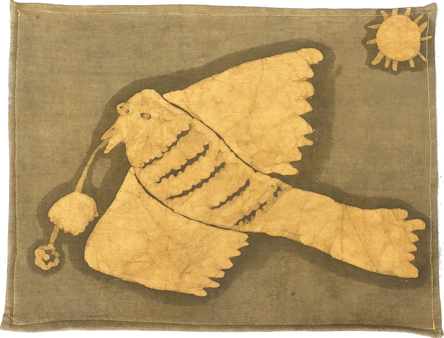
Gabriela Viridiana is a Latin American, ecofeminist woman. Inhabiting her territory is the seed of her work. She built an unusual house, a nest with breathing walls and woven roofs, where inner life is born in conversation with the mountain that holds it. In her work she seeks to approach the earth from listening, not from imposition, because nature has been exploited by patriarchy as a capital that endlessly feeds the unconscious man. By building the house a conversation was opened, a weaving, that still lingers between the mountain, the house and her body. She reaches her territory listening to the animal instinct, that's why she approached the birds, to understand how to build a nest. From there Gabriela seeks to be a bird woman who weaves her house and offers it to the earth. To commemorate the vital messages that she receives from the birds and the wolves, she weave words: “La casa se estrechó contra mí como una loba y por un momento sentí que era mi madre” (The house cuddled up to me like a she-wolf and for a moment I felt she was my mother). Viridiana takes her house to other places and opens questions on how we have inhabited the world and on how we may do it from care and awareness. She weaves houses, that are sheep’s hugs, to remind us that we must curl up, as we once did in the uterus, our first house, but this time in the earth, which is also a sacred feminine womb where we are protected and which we must protect. The mountain, the house, and the uterus are grandmothers, mothers, and daughters. Gestating and inhabiting the house opened the paths that she would like to deepen at this stage of her work: to hold a conversation with the mountain and with the earth that she inhabits, honoring the mountain as house and as body. Weaving the mountain allows her to be inside of her and to carry her skin. Weaving her is watching over her memory so that it remains unerasable. Going into the mountain and meeting the Mother is to recognize her. With her work two distant mountains in the same territory embrace each other, touching their skins and their scars. She explores the materiality treasured by the earth to give voice to the Great House. Gabriela walks mountains and with the colors offered to her, she dyes the wools that narrate their messages and she shapes the adobe bricks that tell of the encounter of her body with the mountain. Viridiana weaves intervened fibers that she naturally dye, and works with the different stages of earth, from raw to burned. Weaving is a political act of resistance, where she understands time in a different dimension that, stitch after stitch, brings immensity. Weaving brings her transparency. Sitting to weave is a rite to the now. When weaving, a void is created that shall be filled by a body. Weaving is also a non-destructive way of inhabiting the body, the house, the mountain, the earth. Weaving her way of thinking, of talking with the earth that whispers the next stitch. The earth, like the weave, breathes and will always be alive.
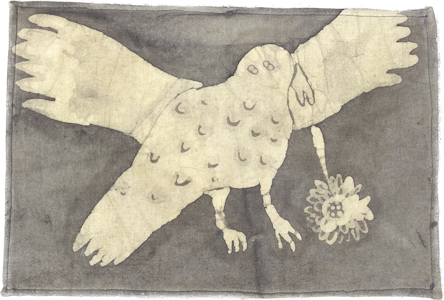
Gabriela Viridiana is a Latin American, ecofeminist woman. Inhabiting her territory is the seed of her work. She built an unusual house, a nest with breathing walls and woven roofs, where inner life is born in conversation with the mountain that holds it. In her work she seeks to approach the earth from listening, not from imposition, because nature has been exploited by patriarchy as a capital that endlessly feeds the unconscious man. By building the house a conversation was opened, a weaving, that still lingers between the mountain, the house and her body. She reaches her territory listening to the animal instinct, that's why she approached the birds, to understand how to build a nest. From there Gabriela seeks to be a bird woman who weaves her house and offers it to the earth. To commemorate the vital messages that she receives from the birds and the wolves, she weave words: “La casa se estrechó contra mí como una loba y por un momento sentí que era mi madre” (The house cuddled up to me like a she-wolf and for a moment I felt she was my mother). Viridiana takes her house to other places and opens questions on how we have inhabited the world and on how we may do it from care and awareness. She weaves houses, that are sheep’s hugs, to remind us that we must curl up, as we once did in the uterus, our first house, but this time in the earth, which is also a sacred feminine womb where we are protected and which we must protect. The mountain, the house, and the uterus are grandmothers, mothers, and daughters. Gestating and inhabiting the house opened the paths that she would like to deepen at this stage of her work: to hold a conversation with the mountain and with the earth that she inhabits, honoring the mountain as house and as body. Weaving the mountain allows her to be inside of her and to carry her skin. Weaving her is watching over her memory so that it remains unerasable. Going into the mountain and meeting the Mother is to recognize her. With her work two distant mountains in the same territory embrace each other, touching their skins and their scars. She explores the materiality treasured by the earth to give voice to the Great House. Gabriela walks mountains and with the colors offered to her, she dyes the wools that narrate their messages and she shapes the adobe bricks that tell of the encounter of her body with the mountain. Viridiana weaves intervened fibers that she naturally dye, and works with the different stages of earth, from raw to burned. Weaving is a political act of resistance, where she understands time in a different dimension that, stitch after stitch, brings immensity. Weaving brings her transparency. Sitting to weave is a rite to the now. When weaving, a void is created that shall be filled by a body. Weaving is also a non-destructive way of inhabiting the body, the house, the mountain, the earth. Weaving her way of thinking, of talking with the earth that whispers the next stitch. The earth, like the weave, breathes and will always be alive.

Her work revolves around the complex relationships of human beings with the environment, in the contemporary world. Sara Herrera seeks to address these problems by making visible the values that have been prioritized and built as a society, and those that have been subtracted from the natural world. Through drawing and painting, she establishes dialogues with the current human to make them understand that nature needs to be heard.
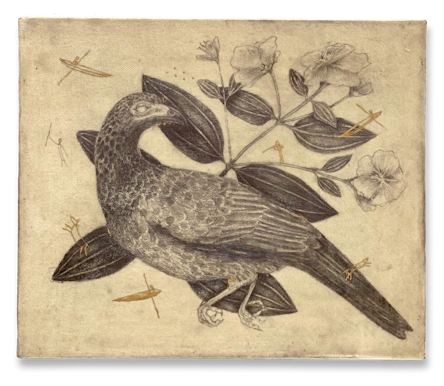
Her work revolves around the complex relationships of human beings with the environment, in the contemporary world. Sara Herrera seeks to address these problems by making visible the values that have been prioritized and built as a society, and those that have been subtracted from the natural world. Through drawing and painting, she establishes dialogues with the current human to make them understand that nature needs to be heard.
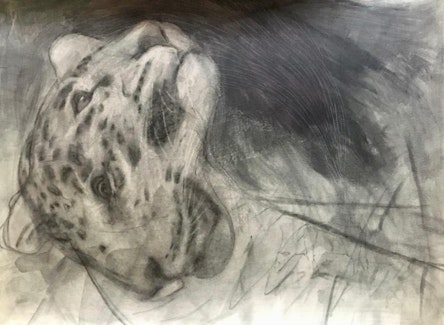
Her work revolves around the complex relationships of human beings with the environment, in the contemporary world. Sara Herrera seeks to address these problems by making visible the values that have been prioritized and built as a society, and those that have been subtracted from the natural world. Through drawing and painting, she establishes dialogues with the current human to make them understand that nature needs to be heard.
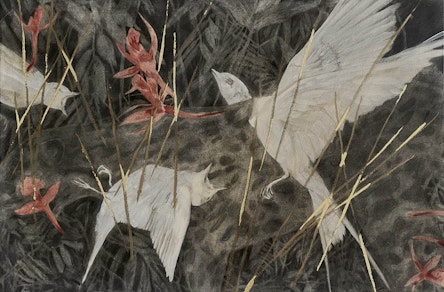
Her work revolves around the complex relationships of human beings with the environment, in the contemporary world. Sara Herrera seeks to address these problems by making visible the values that have been prioritized and built as a society, and those that have been subtracted from the natural world. Through drawing and painting, she establishes dialogues with the current human to make them understand that nature needs to be heard.
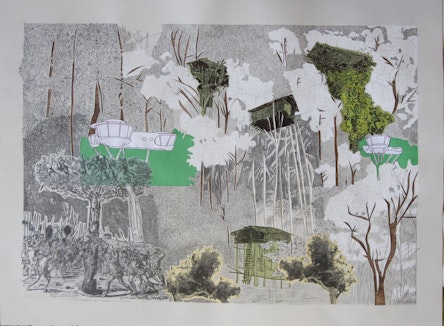
Angelica Teuta ) is a Colombian nomadic artist. She creates site-specific installations that start a dialogue with the guest space and the construction of a dreamlike space. She uses resources such as DIY (do it yourself) methods, analog and digital projections, household materials and sound in order to acquire a playful ambient for the visitor. These immersive spaces talk or question the context and needs that visitors or surroundings experience. Inspired by 19th century ghost imagery, perceptual experience elements are always nude and easy to copy; she doesn’t pretend to trick observers, but rather to inspire them through curiosity to recreate the ambience by themselves at home or in communities. Teuta frequently uses the concept of natural landscapes as a nostalgic representation of our lost world.

Angelica Teuta ) is a Colombian nomadic artist. She creates site-specific installations that start a dialogue with the guest space and the construction of a dreamlike space. She uses resources such as DIY (do it yourself) methods, analog and digital projections, household materials and sound in order to acquire a playful ambient for the visitor. These immersive spaces talk or question the context and needs that visitors or surroundings experience. Inspired by 19th century ghost imagery, perceptual experience elements are always nude and easy to copy; she doesn’t pretend to trick observers, but rather to inspire them through curiosity to recreate the ambience by themselves at home or in communities. Teuta frequently uses the concept of natural landscapes as a nostalgic representation of our lost world.
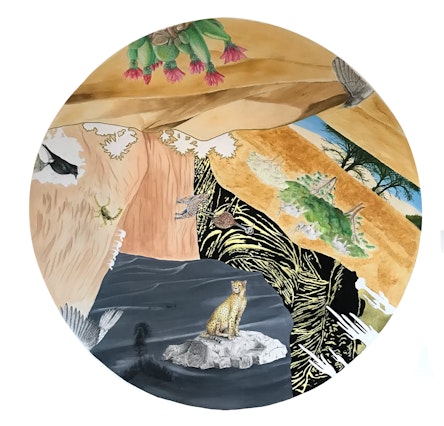
Angelica Teuta ) is a Colombian nomadic artist. She creates site-specific installations that start a dialogue with the guest space and the construction of a dreamlike space. She uses resources such as DIY (do it yourself) methods, analog and digital projections, household materials and sound in order to acquire a playful ambient for the visitor. These immersive spaces talk or question the context and needs that visitors or surroundings experience. Inspired by 19th century ghost imagery, perceptual experience elements are always nude and easy to copy; she doesn’t pretend to trick observers, but rather to inspire them through curiosity to recreate the ambience by themselves at home or in communities. Teuta frequently uses the concept of natural landscapes as a nostalgic representation of our lost world.
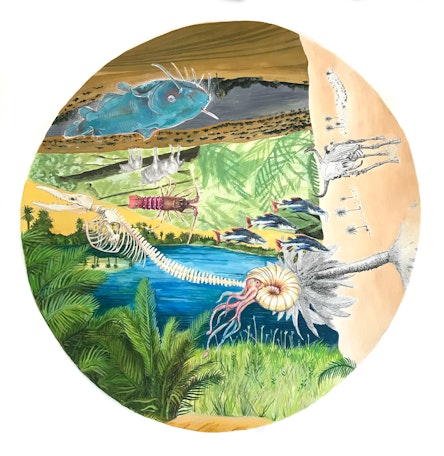
Angelica Teuta ) is a Colombian nomadic artist. She creates site-specific installations that start a dialogue with the guest space and the construction of a dreamlike space. She uses resources such as DIY (do it yourself) methods, analog and digital projections, household materials and sound in order to acquire a playful ambient for the visitor. These immersive spaces talk or question the context and needs that visitors or surroundings experience. Inspired by 19th century ghost imagery, perceptual experience elements are always nude and easy to copy; she doesn’t pretend to trick observers, but rather to inspire them through curiosity to recreate the ambience by themselves at home or in communities. Teuta frequently uses the concept of natural landscapes as a nostalgic representation of our lost world.